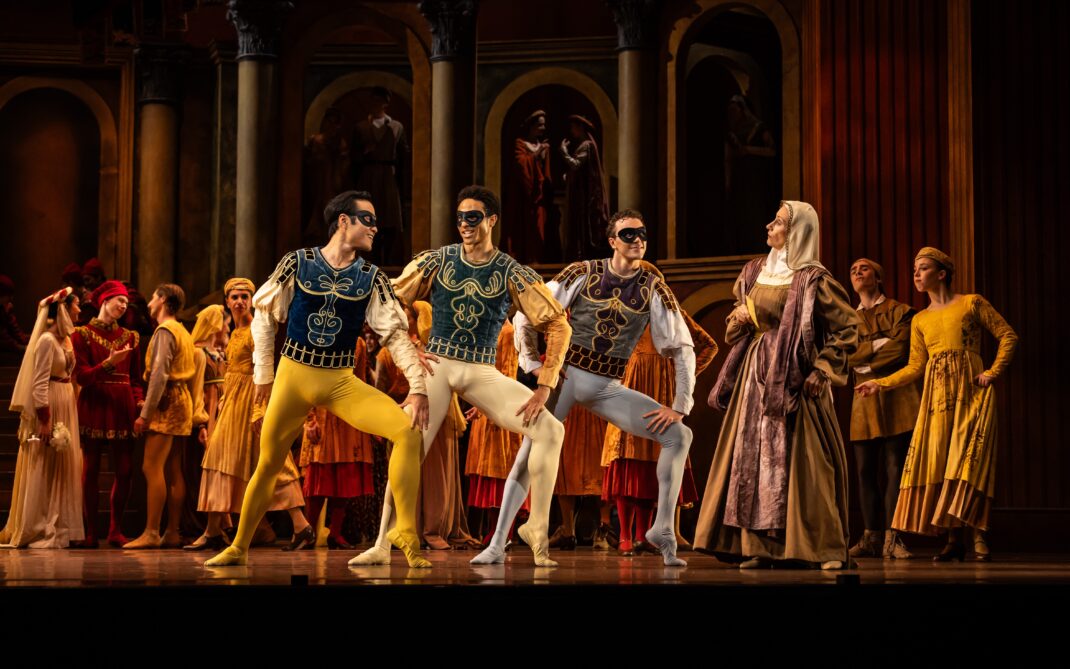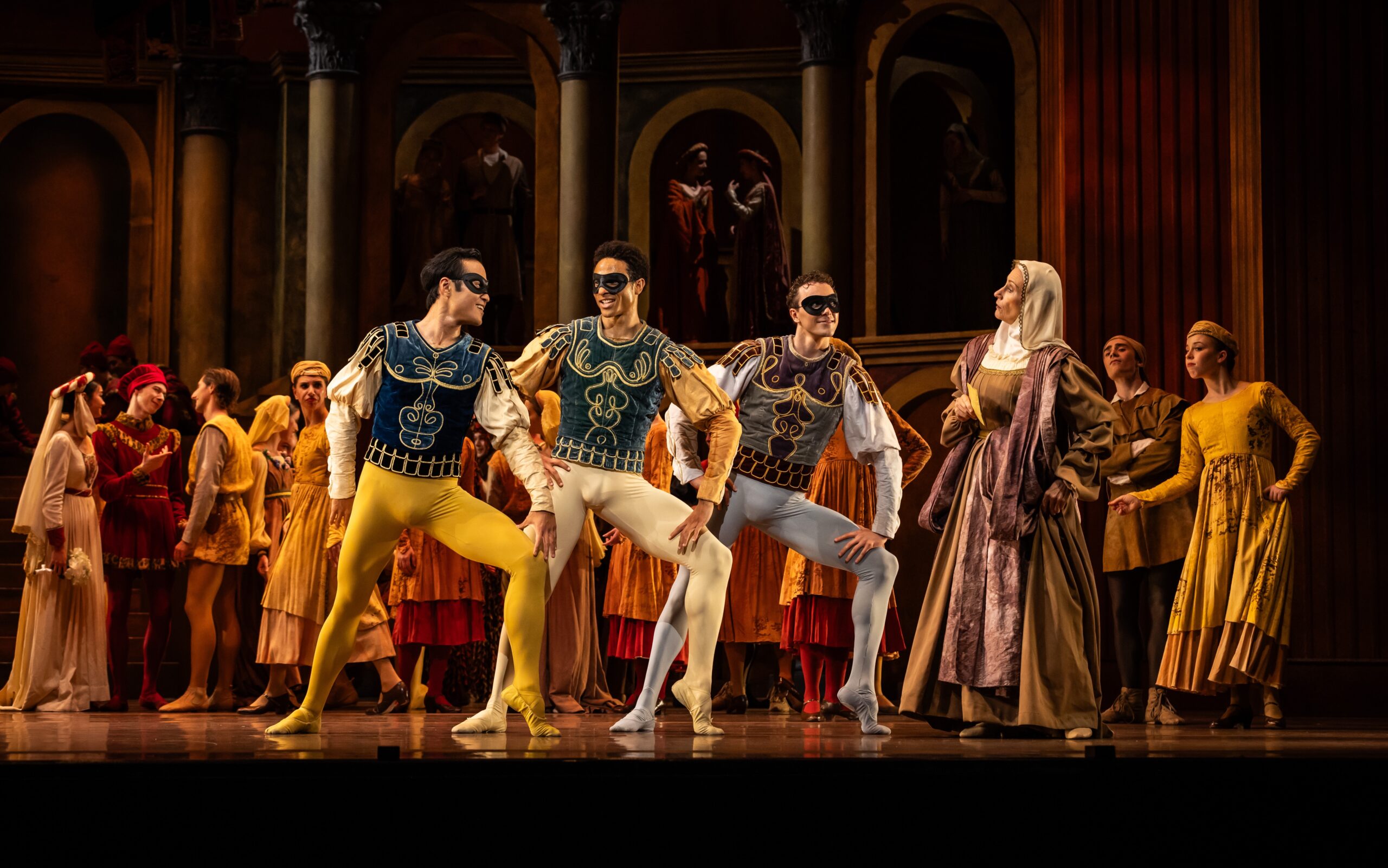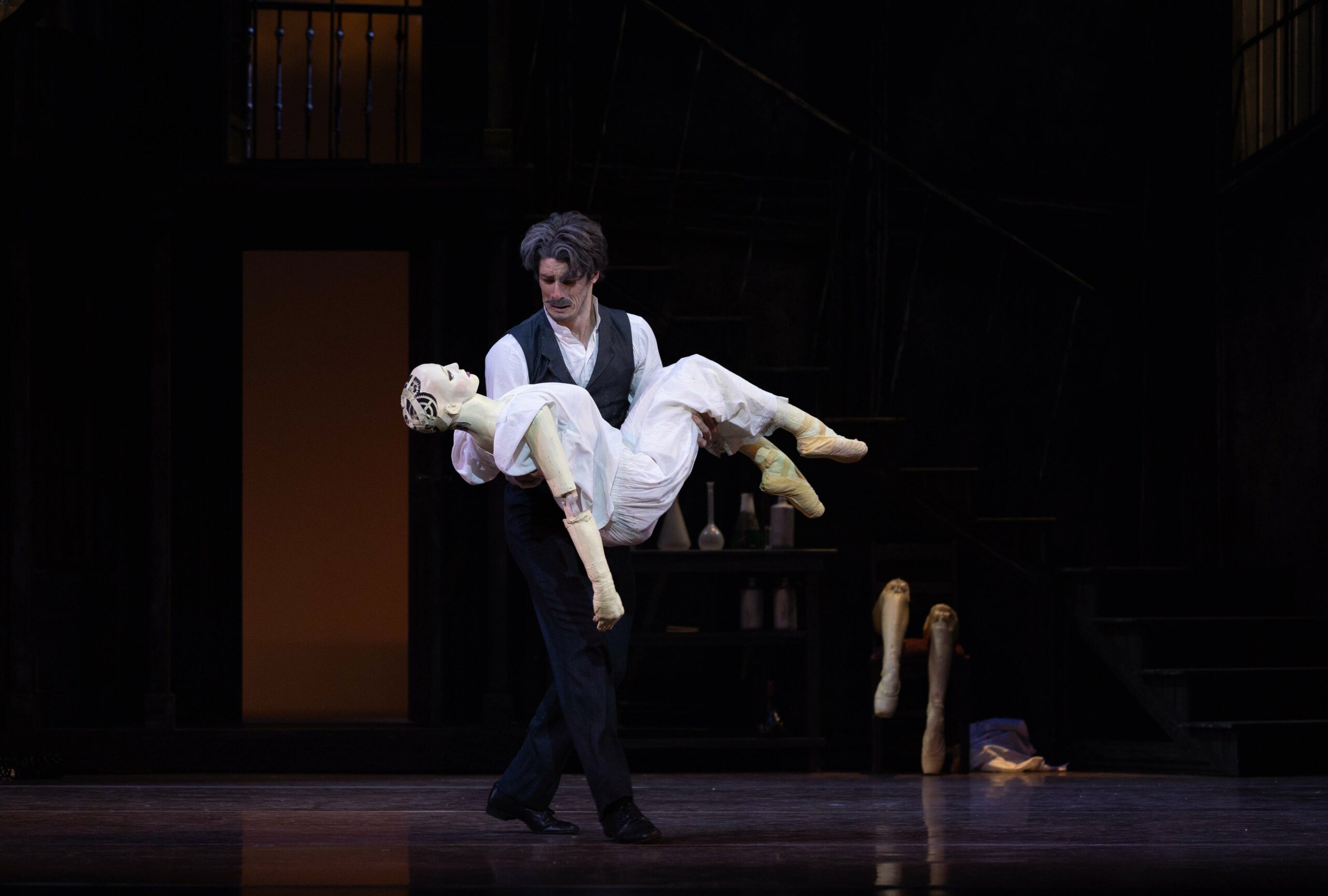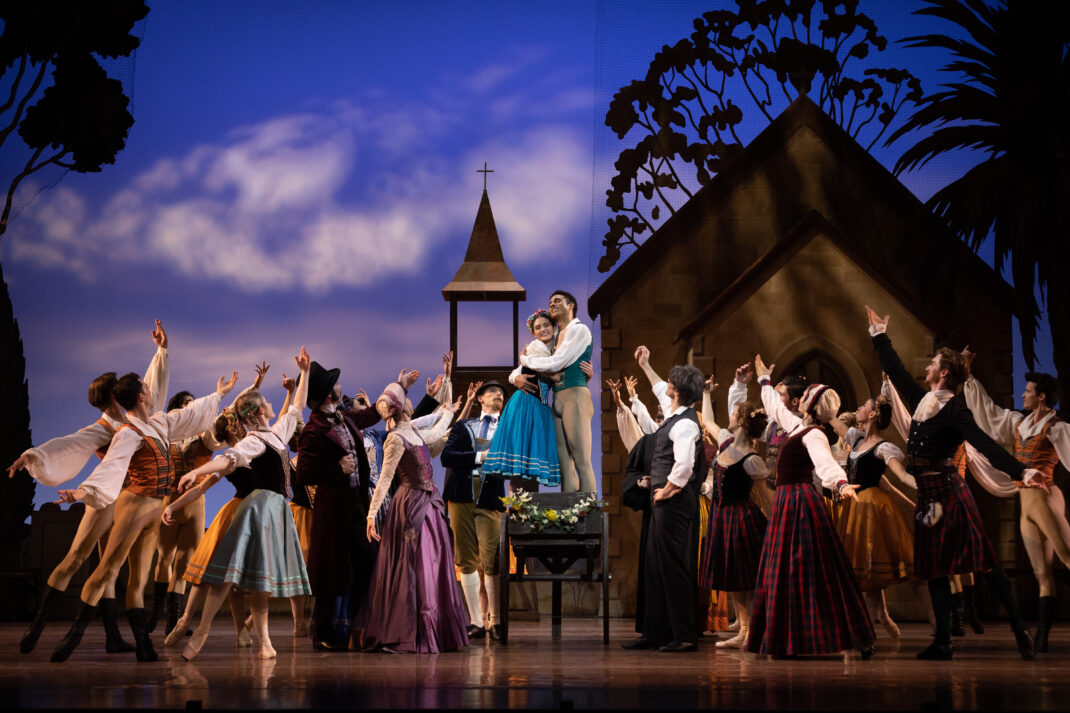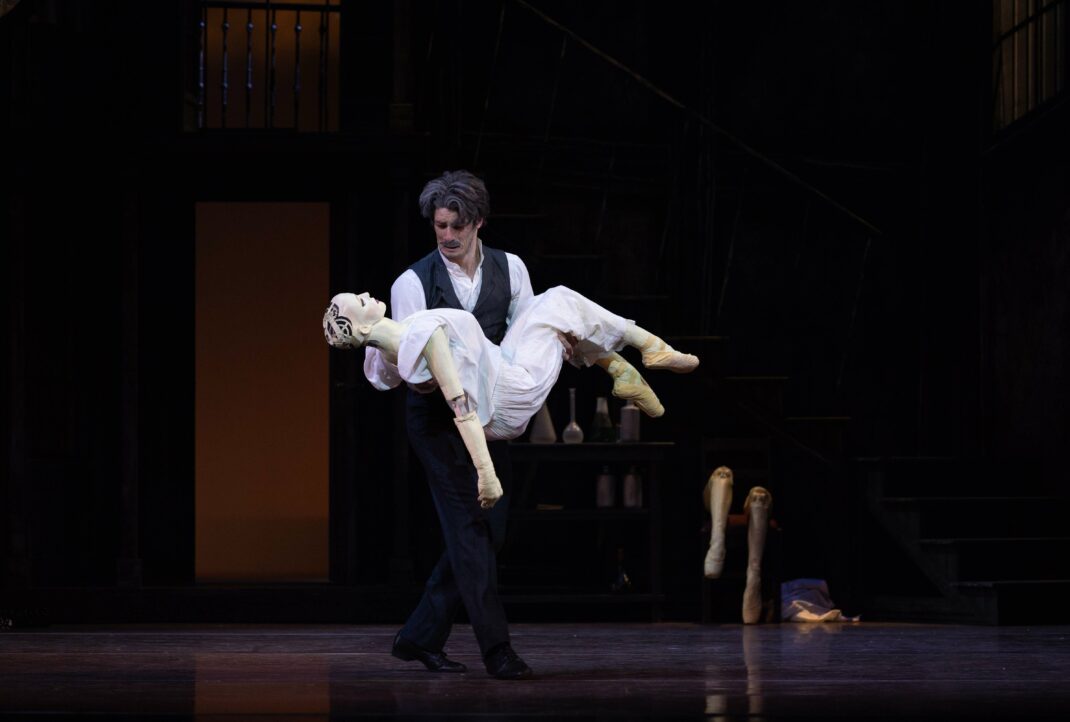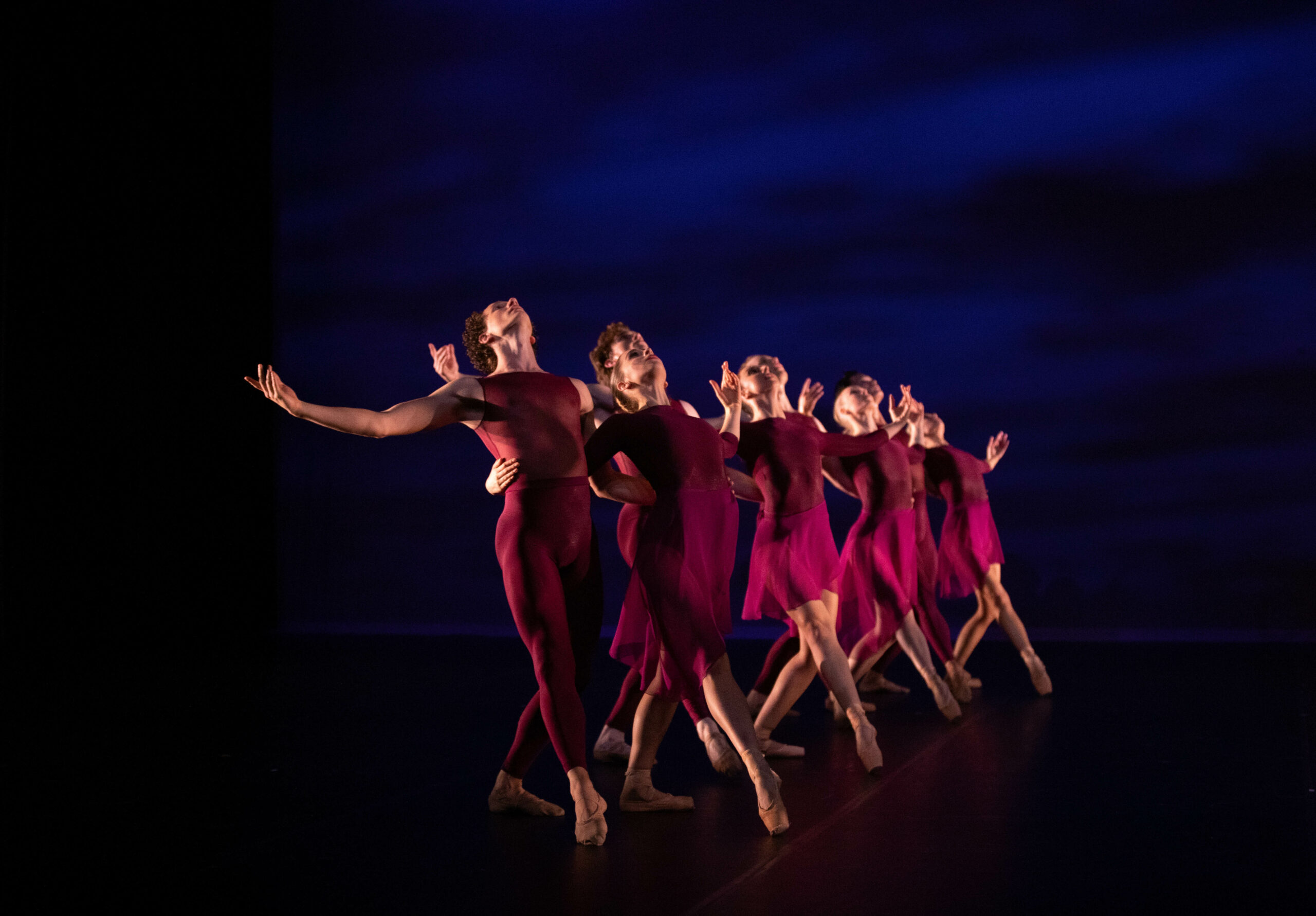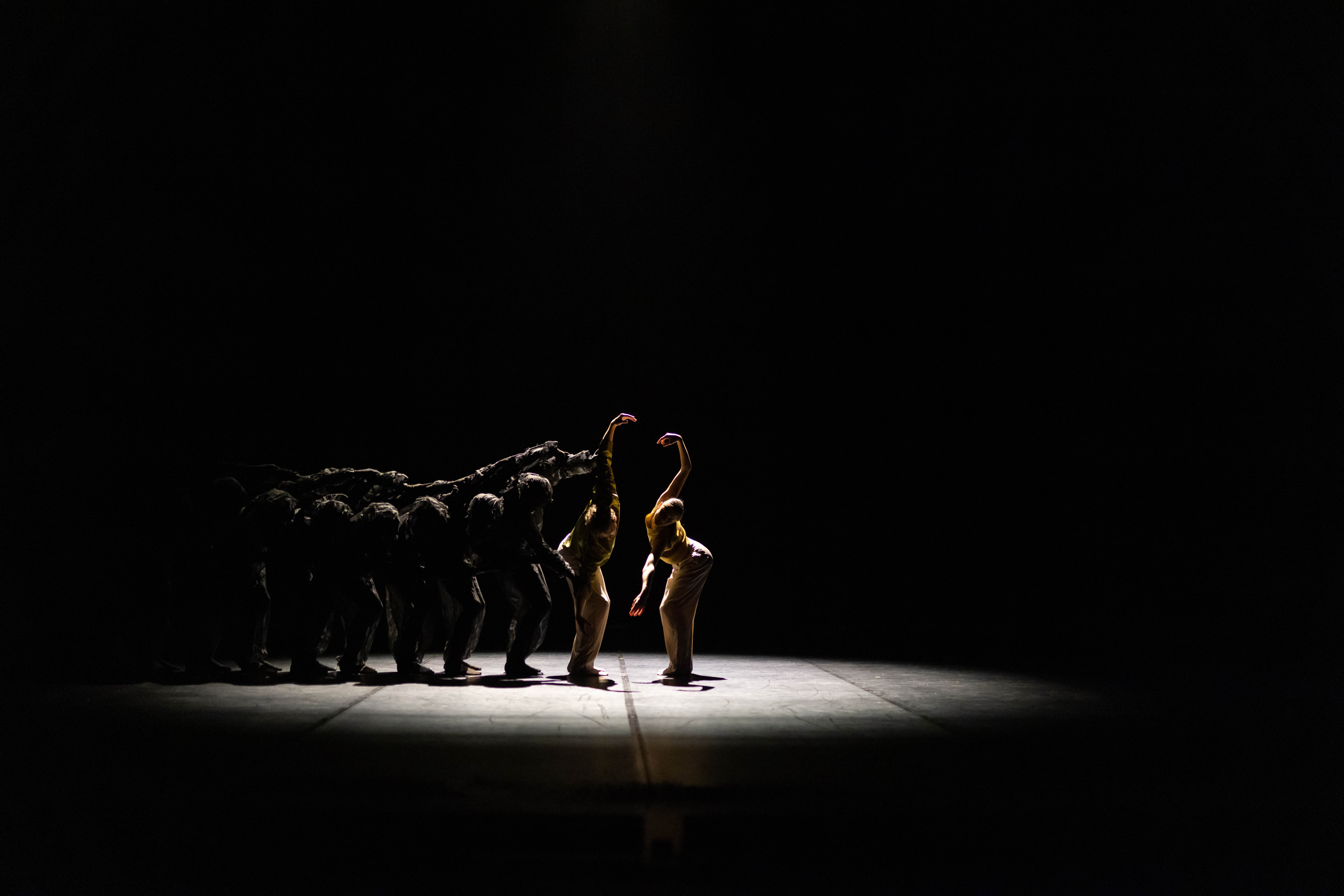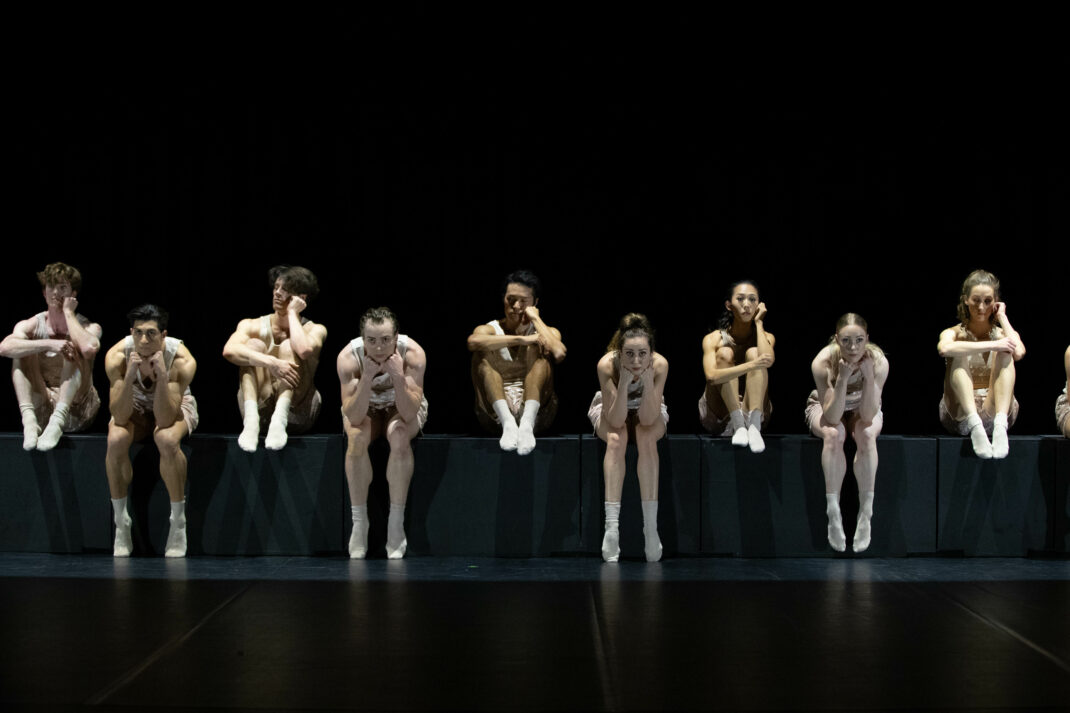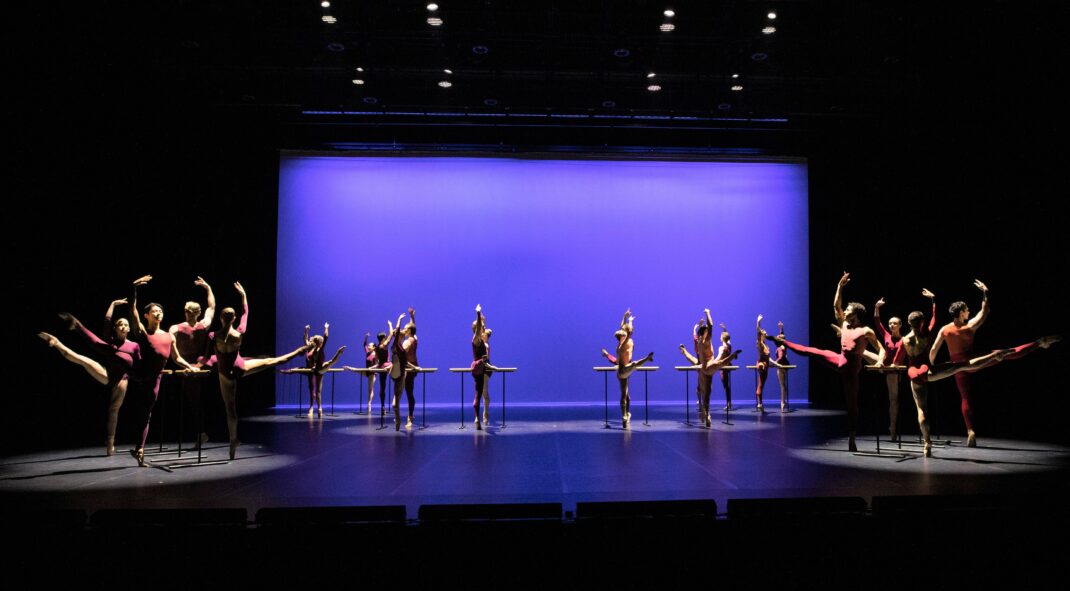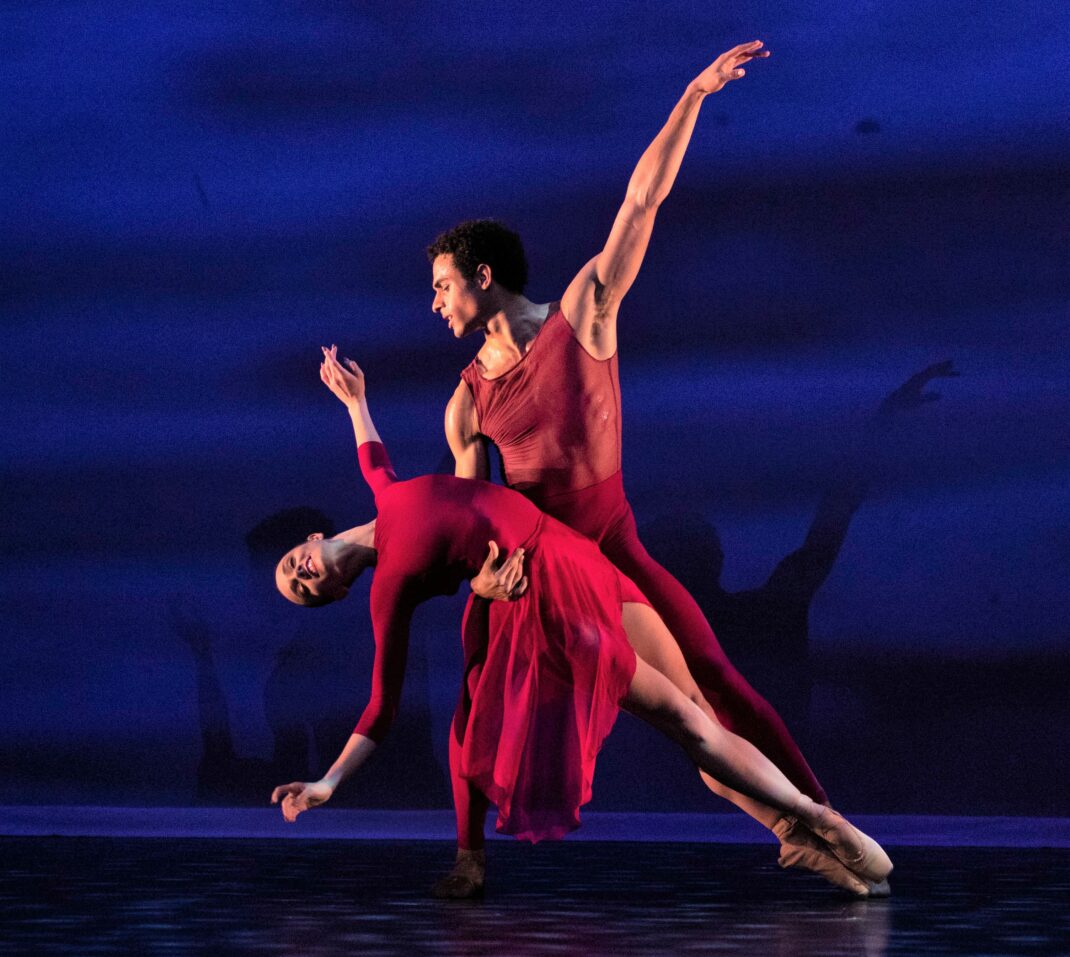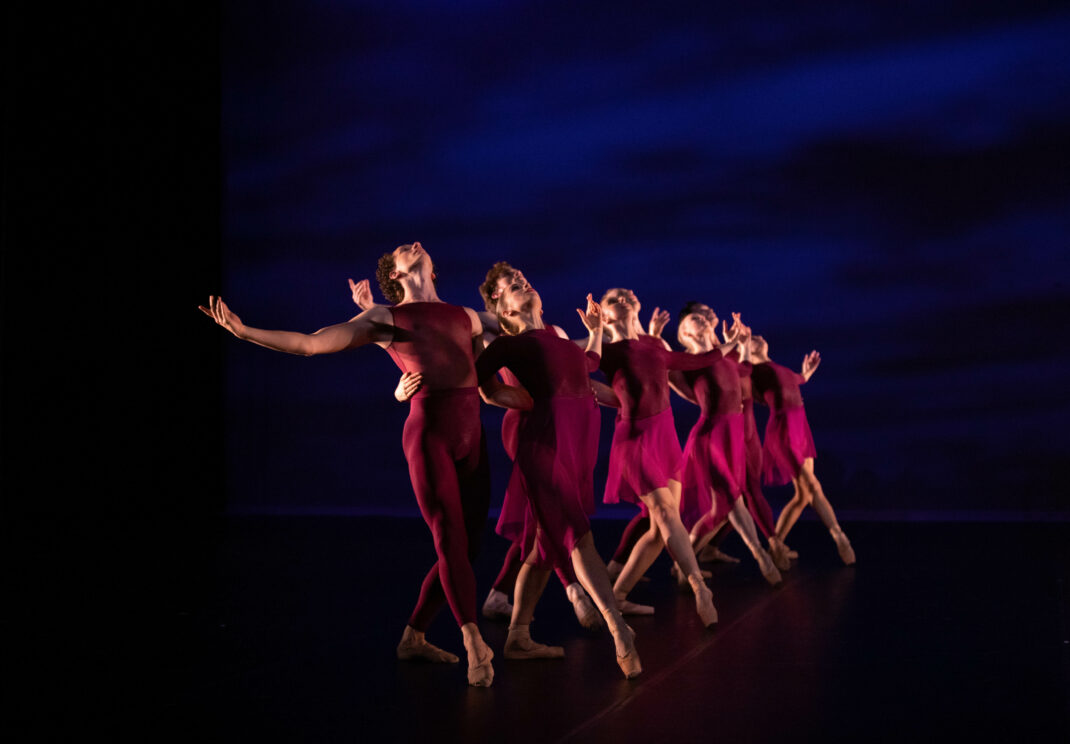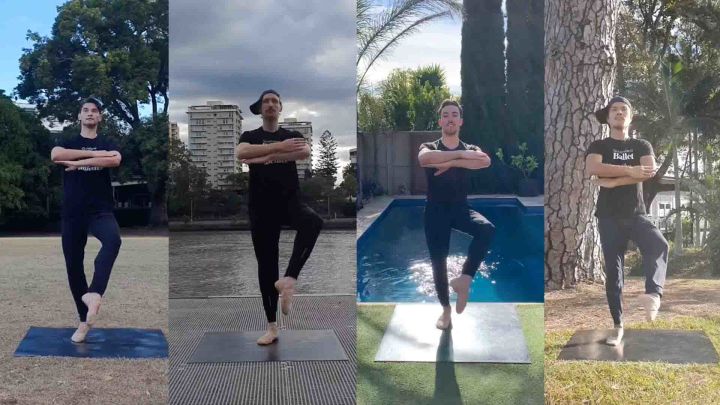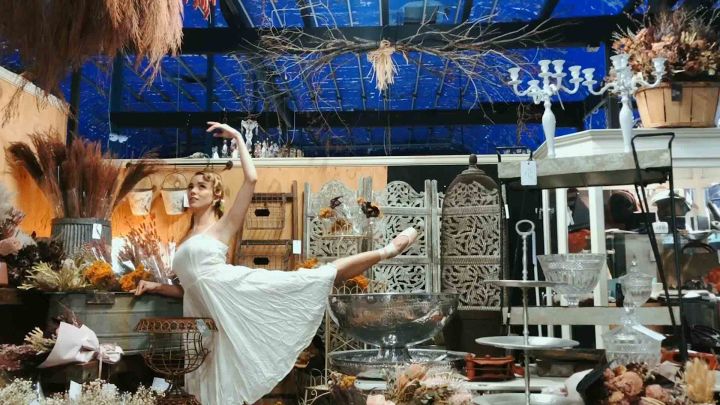21 March 2025. Lyric Theatre, Queensland Performing Arts Centre, Brisbane
Kenneth MacMillan’s Romeo and Juliet is a long ballet—almost three hours (if we include the two intervals between acts). But it is such a strong work by MacMillan, and so magnificently performed by Queensland Ballet in this 2025 presentation, that those three hours just flew by.
The relationship between Romeo (Patricio Revé) and Juliet (Chiara Gonzalez), critical to the success of the work, was carefully developed throughout, whether at their first meeting, or during the now-famous balcony scene, or when engaging in a clandestine marriage, or right at the end when Juliet wakes in the family crypt and discovers that Romeo is dead on the floor beside her bed.
Much of their dancing took the form of pas de deux, a typical MacMillan approach, and MacMillan’s choreographic approach to every pas de deux was thrilling to watch. In particular I loved the detailed movement of the feet and the fluidity of the lifts that often had the bodies leaning in unusual ways.
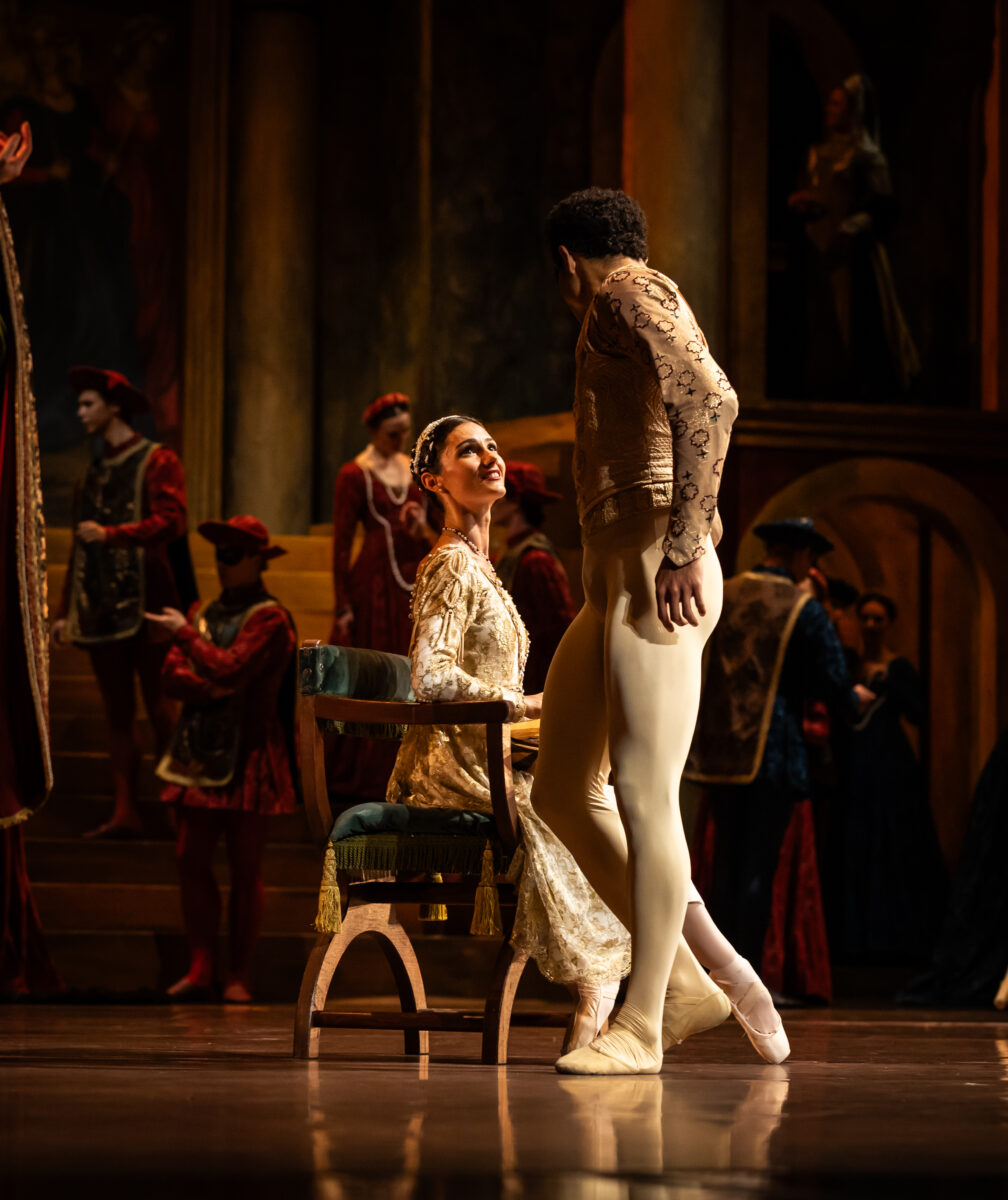
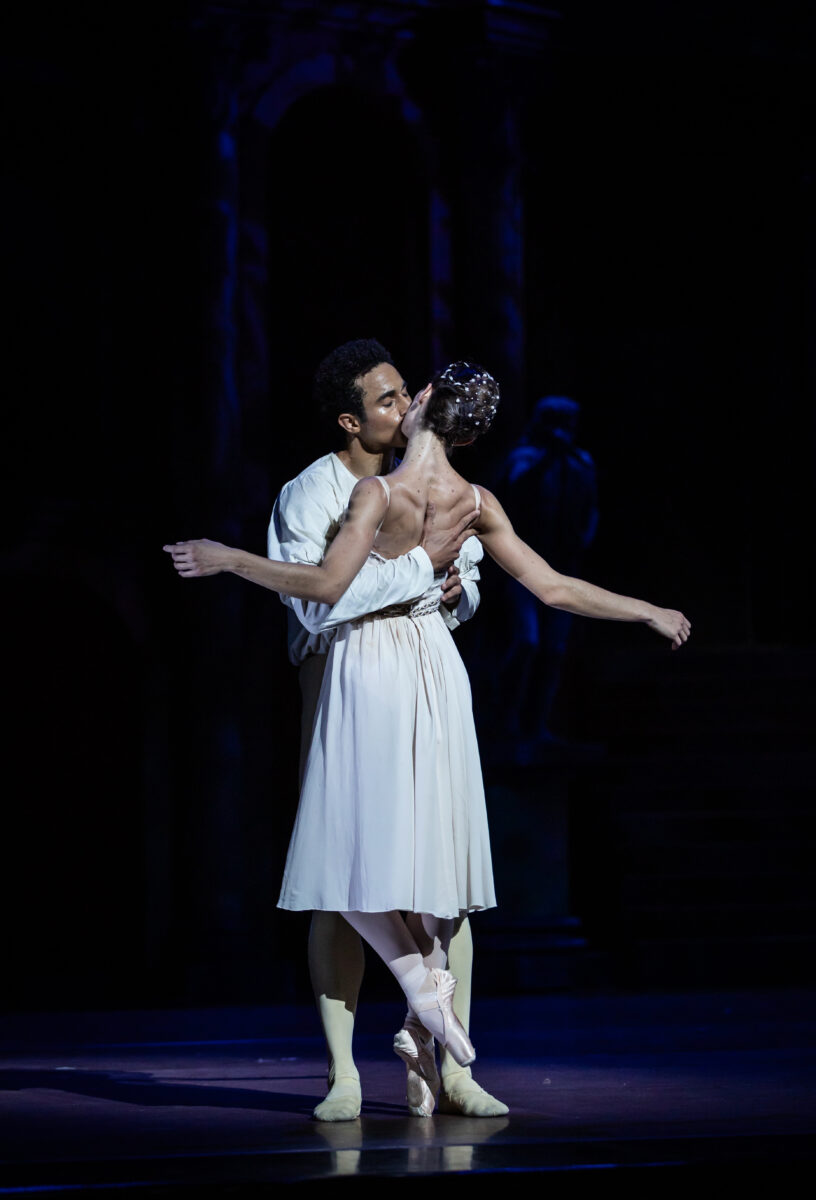
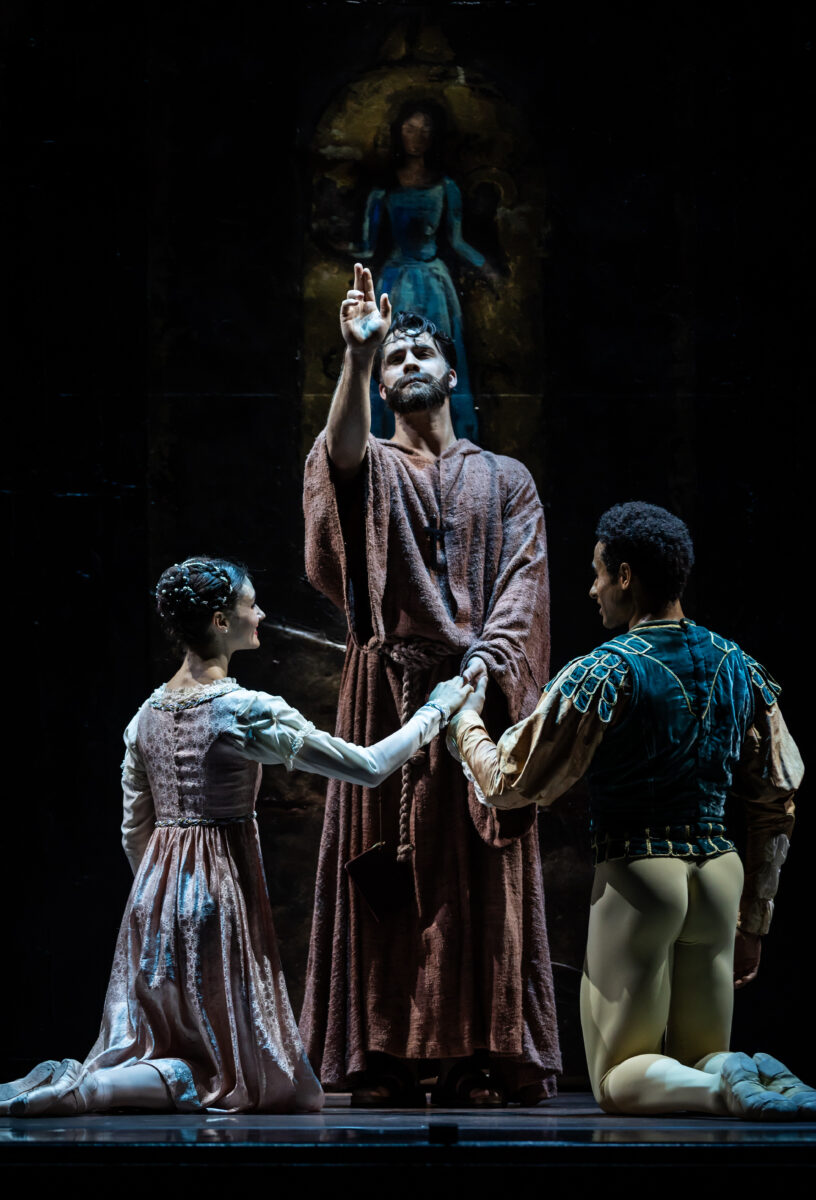
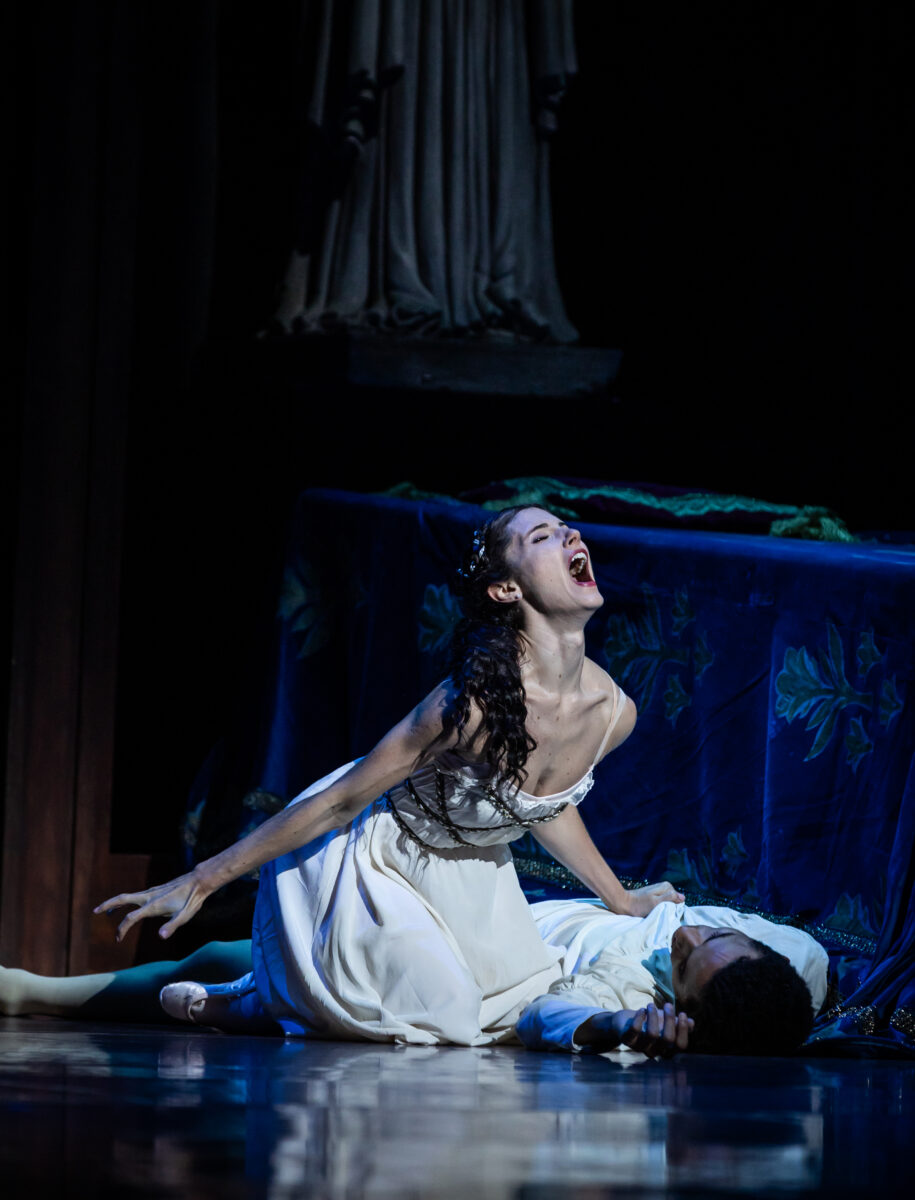
The moments shared by the three friends, Romeo, Mercutio (Kohei Iwamato) and Benvolio (Joshua Ostermann), was also a highlight, whether joyous moments of friendship: or dramatic occasions involving sword fights; or attempts by Mercutio and Benvolio to keep Romeo’s behaviour safe and sensible. The three harlots, Georgia Swan, Laura Tosar and Vanessa Morelli also danced brilliantly as they engaged with the three friends, as well as with others in the market place. And Vito Bernasconi gave a powerful performance as Tybalt, cousin of Juliet. Such was his acting, as well as his technical performance, that I was involved enough to dislike him (as a character) for getting in the way of the relationship developing between Romeo and Juliet.
I missed a little the powerful input from the Capulet family that usually characterises the ball scene, although it was a pleasure to see Lisa Pavane making a return to the stage as Lady Capulet. But the ball scene lacked, I thought, the drama that I recall from a variety of other performances I have seen, including the 2019 production by Queensland Ballet. But I always enjoy the historical references that the dancing at the ball involves, especially the slight backwards tilt of the bodies as the dances proceed.
My one regret is that the design of the work from Paul Andrews seemed heavy and somewhat cumbersome. The scenes in the market place, a setting that figures prominently through the early part of the work, did not look as though the activities were actually happening in a market place but simply in front of a residence. The building that made up the background was very Italian-looking with its columned passage ways and its long flight of steps leading to the upper areas of the building. But it was darkly coloured and somehow gloomy, and the restricted space it created for dancing, and even the capacity for characters to move around in the upper passageways, was not conducive to interesting activity.
It is, however, pretty much impossible not to be carried along by this MacMillan masterpiece, especially when Queensland Ballet continues to dance so well, and when Nigel Gaynor continues to conduct the Queensland Symphony Orchestra so magnificently.
Michelle Potter, 23 March 2025
Postscript: An interesting discussion of the MacMillan Romeo and Juliet can be found in Jan Parry’s biography of MacMillan, Different Drummer (London: Faber and Faber, 2009) pp. 274 ff. Also interesting to watch via the ROH streaming platform (it needs a subscription) is Romeo and Juliet. The Royal Ballet in Rehearsal. It contains Royal Ballet rehearsal footage and a conversation with Deborah MacMillan, Donald MacLeary, Laura Morera and others regarding aspects of the ballet. It is especially interesting as Laura Morera has been the principal coach for the Queensland Ballet presentation.
Featured image: (l-r) Kohei Iwamoto as Mercutio, Patricio Revé as Romeo, and Joshua Ostermann as Benvolio (with Janette Mulligan as the Nurse). Queensland Ballet, 2025. Photo: © David Kelly
